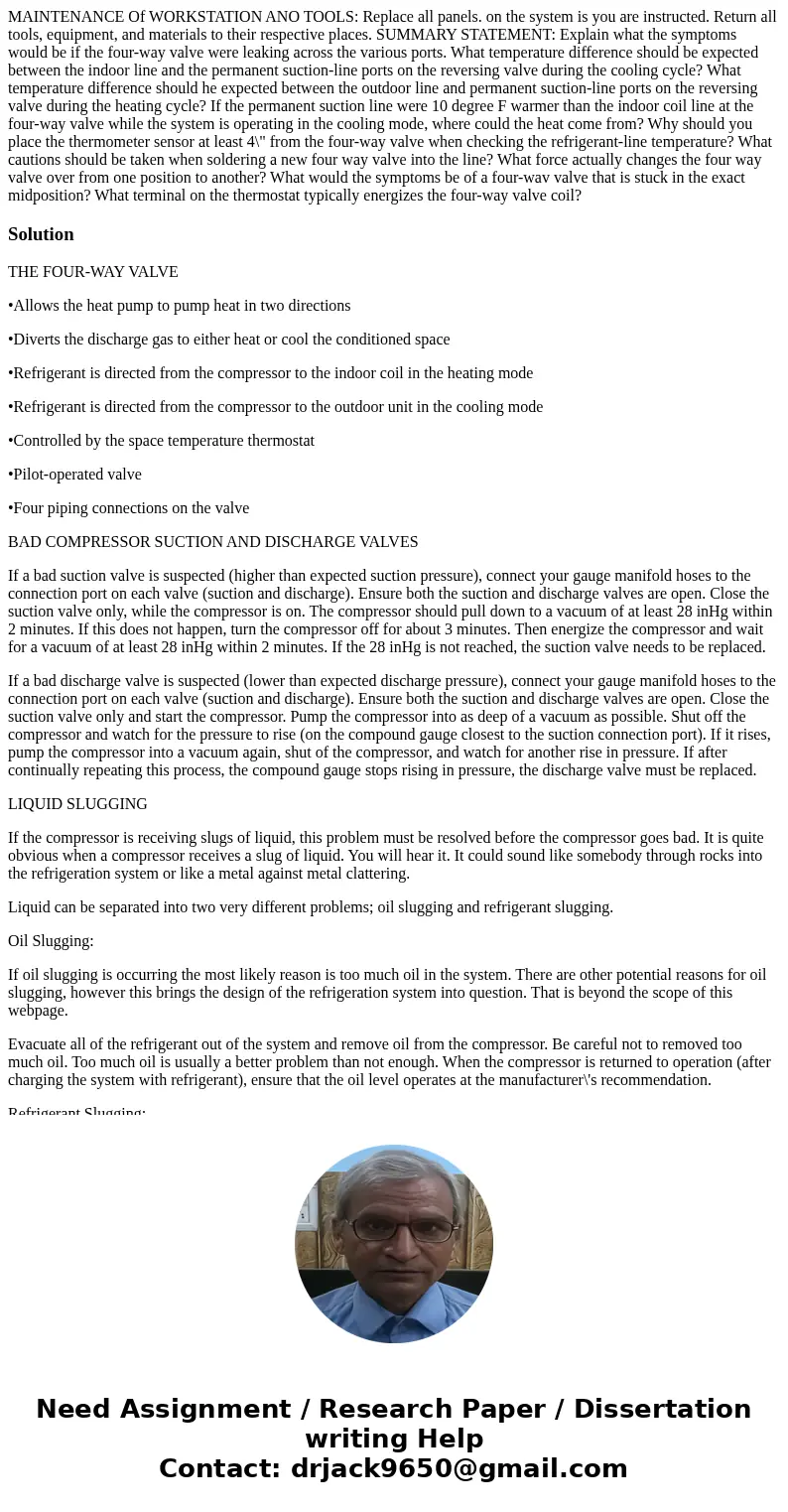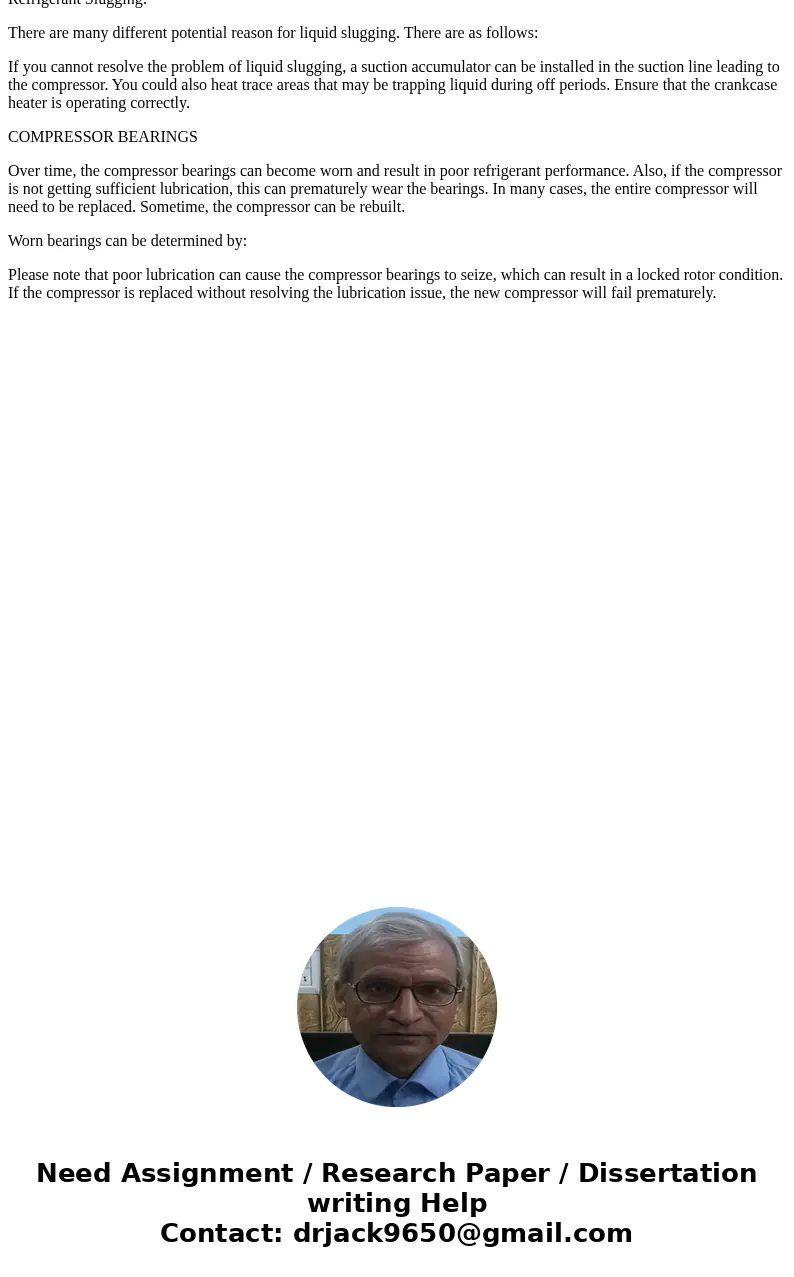MAINTENANCE Of WORKSTATION ANO TOOLS Replace all panels on t
Solution
THE FOUR-WAY VALVE
•Allows the heat pump to pump heat in two directions
•Diverts the discharge gas to either heat or cool the conditioned space
•Refrigerant is directed from the compressor to the indoor coil in the heating mode
•Refrigerant is directed from the compressor to the outdoor unit in the cooling mode
•Controlled by the space temperature thermostat
•Pilot-operated valve
•Four piping connections on the valve
BAD COMPRESSOR SUCTION AND DISCHARGE VALVES
If a bad suction valve is suspected (higher than expected suction pressure), connect your gauge manifold hoses to the connection port on each valve (suction and discharge). Ensure both the suction and discharge valves are open. Close the suction valve only, while the compressor is on. The compressor should pull down to a vacuum of at least 28 inHg within 2 minutes. If this does not happen, turn the compressor off for about 3 minutes. Then energize the compressor and wait for a vacuum of at least 28 inHg within 2 minutes. If the 28 inHg is not reached, the suction valve needs to be replaced.
If a bad discharge valve is suspected (lower than expected discharge pressure), connect your gauge manifold hoses to the connection port on each valve (suction and discharge). Ensure both the suction and discharge valves are open. Close the suction valve only and start the compressor. Pump the compressor into as deep of a vacuum as possible. Shut off the compressor and watch for the pressure to rise (on the compound gauge closest to the suction connection port). If it rises, pump the compressor into a vacuum again, shut of the compressor, and watch for another rise in pressure. If after continually repeating this process, the compound gauge stops rising in pressure, the discharge valve must be replaced.
LIQUID SLUGGING
If the compressor is receiving slugs of liquid, this problem must be resolved before the compressor goes bad. It is quite obvious when a compressor receives a slug of liquid. You will hear it. It could sound like somebody through rocks into the refrigeration system or like a metal against metal clattering.
Liquid can be separated into two very different problems; oil slugging and refrigerant slugging.
Oil Slugging:
If oil slugging is occurring the most likely reason is too much oil in the system. There are other potential reasons for oil slugging, however this brings the design of the refrigeration system into question. That is beyond the scope of this webpage.
Evacuate all of the refrigerant out of the system and remove oil from the compressor. Be careful not to removed too much oil. Too much oil is usually a better problem than not enough. When the compressor is returned to operation (after charging the system with refrigerant), ensure that the oil level operates at the manufacturer\'s recommendation.
Refrigerant Slugging:
There are many different potential reason for liquid slugging. There are as follows:
If you cannot resolve the problem of liquid slugging, a suction accumulator can be installed in the suction line leading to the compressor. You could also heat trace areas that may be trapping liquid during off periods. Ensure that the crankcase heater is operating correctly.
COMPRESSOR BEARINGS
Over time, the compressor bearings can become worn and result in poor refrigerant performance. Also, if the compressor is not getting sufficient lubrication, this can prematurely wear the bearings. In many cases, the entire compressor will need to be replaced. Sometime, the compressor can be rebuilt.
Worn bearings can be determined by:
Please note that poor lubrication can cause the compressor bearings to seize, which can result in a locked rotor condition. If the compressor is replaced without resolving the lubrication issue, the new compressor will fail prematurely.


 Homework Sourse
Homework Sourse